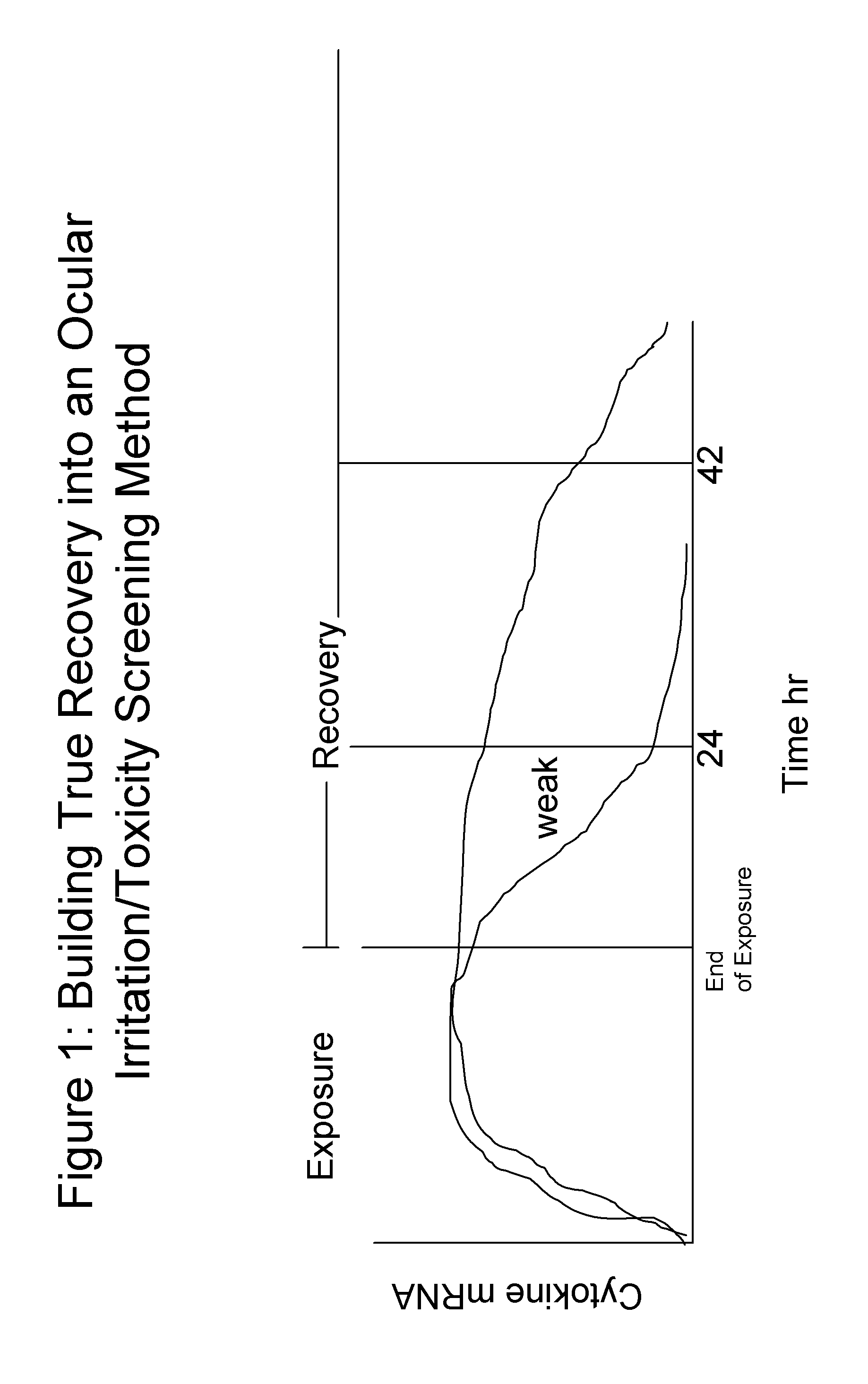Screening methods for ocular irritation and toxicity
a technology of ocular irritation and toxicity, which is applied in the field of in vitro methods for predicting in vivo toxicity of chemical compounds, can solve the problems of high probability of false negative and false positive data, none of these encompasses an integrative approach to data collection and analysis, and humans are typically more susceptible to toxicity than test animals
- Summary
- Abstract
- Description
- Claims
- Application Information
AI Technical Summary
Benefits of technology
Problems solved by technology
Method used
Image
Examples
Embodiment Construction
[0011]The following detailed description and appendices describe and illustrate various exemplary embodiments. The description and drawings serve to enable one skilled in the art to make and use the presently disclosed and claimed inventive concept(s), and are not intended to limit the scope of the inventive concept(s) in any manner.
[0012]Relevant background information is available in the following US patents: U.S. Pat. No. 6,998,249 issued to McKim and Cockerell on Feb. 14, 2006; and U.S. Pat. No. 7,615,361, issued to McKim on Nov. 11, 2009. The entire contents of each of the above-referenced patents are expressly incorporated into this disclosure.
[0013]Before explaining at least one embodiment of the inventive concept(s) in detail by way of exemplary drawings, experimentation, results, and laboratory procedures, it is to be understood that the inventive concept(s) is not limited in its application to the details of construction and the arrangement of the components set forth in t...
PUM
| Property | Measurement | Unit |
|---|---|---|
| Molar density | aaaaa | aaaaa |
| Molar density | aaaaa | aaaaa |
| Time | aaaaa | aaaaa |
Abstract
Description
Claims
Application Information
 Login to View More
Login to View More - R&D
- Intellectual Property
- Life Sciences
- Materials
- Tech Scout
- Unparalleled Data Quality
- Higher Quality Content
- 60% Fewer Hallucinations
Browse by: Latest US Patents, China's latest patents, Technical Efficacy Thesaurus, Application Domain, Technology Topic, Popular Technical Reports.
© 2025 PatSnap. All rights reserved.Legal|Privacy policy|Modern Slavery Act Transparency Statement|Sitemap|About US| Contact US: help@patsnap.com

